#Gert Hoffmann
Explore tagged Tumblr posts
Text
12 Must-Read Novels for Art History Lovers

Maybe you’ve been experiencing “The Agony and the Ecstasy” of trying to figure out what to read next! If so, we’ve got you covered. Go beyond “Girl with a Pearl Earring” and “The Goldfinch” with these incredible novels about art and art history.
Disclaimer: Some of the links below are amazon affiliate links, meaning that at no additional cost to you, by clicking through and making a purchase of a book you like, you will also be contributing to the growth of Sartle.
1. "The Girl in Hyacinth Blue" by Susan Vreeland
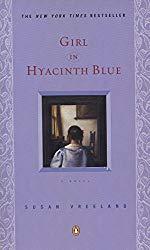
If you loved “Girl with a Pearl Earring,” you’ll fall in love with this book, too. Starting with a troubled math teacher who is quite certain the work he hides in a cabinet at home is a genuine Vermeer, the novel traces the owners of the painting back in time in a series of vignettes that function as a living, breathing provenance. An exploration of the meaningful roles art can play in the lives of those who cherish it, this book is as thoughtful and gentle as the light that falls from the windows in a Vermeer painting.
2. "The Relic Master" by Christopher Buckley
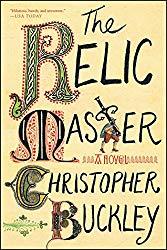
A crime caper steeped in art and history, the story follows one Dismas, the official relic master to Frederick, Elector of Saxony, and Albrecht, the soon-to-be Cardinal of Mainz, in the year 1517, when Luther has shattered faith in the Church and relics themselves begin to be called into question. He and his friend, none other than the preening Albrecht Dürer, get swept up in a scheme to make a copy of the Shroud of Chambery. The novel, like what one imagines 16th century Germany to be like, is earthy, humorous, and occasionally quite brutal. But it’s witty and shameless (“To Hell with Purgatory!”) and a perfect Renaissance romp about the intersections of art, piety, and politics.
3. "The Parable of the Blind" by Gert Hoffmann

A strange and haunting tale that looks at the painting of the same name by Pieter Bruegel the Elder, the novel is told from the perspective of the blind “sitters” for the painting on the day that Bruegel painted them. As they journey across a landscape of unseen people and obstacles, they wonder where they are going, why they are being painted, and why anyone would want to look upon them permanently when people turn their heads away in real life. Riddled with black humor, the novel is a picture of suffering and existential woe à la “Waiting for Godot,” and will linger in your mind long after you read it.
4. "The Muse" by Jessie Burton
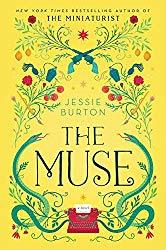
Don’t be deceived when the cover calls this book a “Simmering romance” because it’s far more than that; it’s a meditation on artistic integrity and ownership wrapped up in a story of relationships that reads like a thriller. The novel follows two storylines that intertwine masterfully. In one, a Caribbean émigré trying to make her way in 1960s London dreams of becoming a writer but gets a job at a prestigious art institute working for the mysterious Marjorie Quirk. In the other, an English girl living in rural Spain in the 1930s yearns to become an artist and falls under the spell of the countryside and painter-turned-revolutionary Isaac Robles. It’s a vivid tale of love and loss, ego and creativity, that is a marvelous follow-up to her first novel, “The Miniaturist” (which you should also definitely read if you haven’t already!).
5. "Modern Art" by Evelyn Toynton
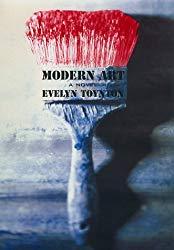
Inspired by the lives of Lee Krasner and her husband Jackson Pollock, this novel follows Belle Prokoff, an aging artist from the New York School, who has outlived her much more famous husband and spent her last few decades guarding his albeit troubled legacy. As she faces her own mortality and hires a grad student (who is also in love with an artist) as a live-in helper, Prokoff is forced to confront ghosts from her past when a nosy biographer comes sniffing around for dirt on her husband. Adroit and piercing, the novel asks what do you do with yourself after you have poured all of your being into someone else? And what does sacrificing yourself in that way do to you? Toynton tackles themes of suffering and artistic integrity with elegance and wisdom.
6. "The Moon and Sixpence" by W. Somerset Maugham
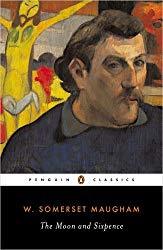
This classic novel follows a turn of the twentieth century English artist named Charles Strickland who abruptly abandons his family and life as a stockbroker to devote himself entirely to painting. Completely impoverished but in desperate pursuit of beauty, he studies in France and eventually ends up in Tahiti, where his artistic genius flourishes even as he suffers from leprosy. If this sounds reminiscent of the life of Paul Gauguin to you, you would not be mistaken--Somerset Maugham was inspired by the very same, only his version of the artist is by turns both more and less brutal than the real man. The Moon and Sixpence is a prime example of a kunstlerroman, a novel about an artist’s growth, painting the artist-hero as a necessarily anti-social being whose creative side can only flower in isolation and rebellion against social norms. While it’s not a perfectly accurate image of Gauguin’s life, and while the narrator espouses some outdated views about women and people of color, the book raises questions about genius and legacy that are still relevant today.
7. "Sunflowers" by Sheramy Bundrick
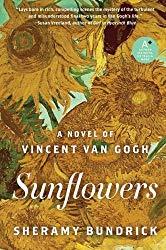
If you liked “Loving Vincent” or are just fascinated by the work of Vincent Van Gogh, then this novel is for you. Told from the perspective of the prostitute named Rachel unto whom Vincent famously bestowed part of his mutilated ear, the novel gives life to Vincent’s happy but troubled years in Arles. Many of the people he lovingly painted are presented in the flesh, from his friends like Joseph Roulin to the perfectly nasty Gauguin, whom readers will find reason to hate even more than in the “The Moon and Sixpence.” At its heart the book is a love story, but it’s punctuated by moments of both joyous artistic creation and those of the darkest depths of mental illness. His romantic self, a side of Vincent we don’t normally see, is explored with great sympathy. Written by an art historian, the novel is convincing and well-researched, and even includes a list of all the paintings referenced in the back.
8. "A Month in the Country" by J. L. Carr
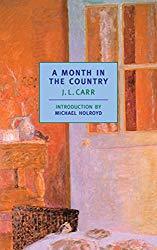
In this slim, poetic volume, a young Englishman recovering from a broken marriage and shell shock after the Great War finds himself spending a summer in a Yorkshire village, where he has been hired to uncover a medieval mural in a church. By night he sleeps in the church’s belfry, and by day he befriends the locals, bonds with another veteran whose been hired to uncover a medieval grave, and falls in love with the Vicar’s wife, all while working steadily at uncovering a medieval judgment scene. Tiny revelations--in the begrimed mural at which he’s chipping away, in his own wounded heart, and in the hearts of those around him--make up the soul of this placid yet powerful book that is a hymn to the healing power of art.
9. "I Always Loved You" by Robin Oliveira
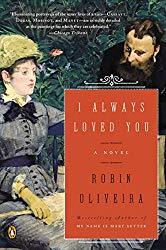
With such a title this book might easily be dismissed as a typical romance, but it is actually a rarer thing: a story about love between two people that may never have been returned by either party. Namely, it chronicles the fraught and querulous relationship between Mary Cassatt and Edgar Degas. Set in a glittering and rain-washed Belle Époque Paris, the novel follows Mary Cassatt as she struggles to establish herself in the art world until Degas takes her under his wing. Her successes and sorrows over the years unfold alongside the drama of Degas’ vision loss and the grief-stricken love affair between fellow impressionists Berthe Morisot and her brother-in-law, Edouard Manet. Aside from being a vivid look at the politics of the Impressionist circle within the Parisian art world, it is also an eloquent tale about the struggle of artistic creation in the face of constant doubt, harsh criticism, and heartache. You can learn more about the puzzling relationship between Cassatt and Degas here.
10. "Portrait of an Unknown Woman" by Vanora Bennett
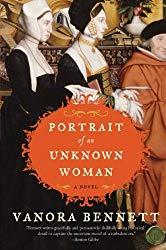
This novel follows Meg Giggs, the twenty-three-year-old ward of Sir Thomas More, at the eve of the Reformation in England. The More family, which will soon be torn by political, religious, and courtly strife, is visited by Hans Holbein the Younger, who paints their portraits multiple times with an uncanny ability to capture the hidden truths of their hearts. While More’s humanistic ideals become warped by anti-heresy fanaticism even as Henry VIII grows disenchanted with the faith More fiercely protects, Meg finds herself increasingly drawn to the German artist who embodies a more earthy, compassionate form of Humanism. While Bennett occasionally plays fast and loose with history (like the identity of the sitter in Holbein’s portrait of the titular name, for one), overall the book is richly drawn and well-researched. Even better, her descriptions of Holbein’s painting process for such enigmatic works as The Ambassadors is highly compelling. The dangerous times in which he lived, as well as a taste for symbolism in the Tudor world, meant Holbein had to couch the truths he perceived in iconography both subtle and complex, and Bennett illustrates this well.
11. "The Secret Book of Frida Kahlo" by F. G. Haghenbeck
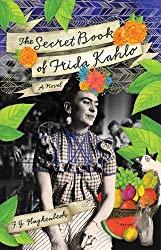
This colorful and spirited novel was inspired by a mysterious notebook found in Frida Kahlo’s house in Mexico City that was full of handwritten recipes the artist had collected over the years. A complex woman, Frida was quite the cook, and this novel explores the prominent place food had in her life, with recipes at the end of each chapter. Throughout the course of Frida’s tumultuous time on Earth, her marriages to Diego Rivera and her affairs with lovers from Georgia O’Keeffe to Leon Trotsky, she is haunted by a vision of death, whom she calls her Godmother, and whom she meets the day she almost dies in a trolley accident as a teenager. In Haghenbeck’s capable hands, Frida’s veneration of the Day of the Dead, her existential feminist fire, and the emotional intensity of her paintings come alive with surreal imagery and the imagined taste of Frida’s fabulous food on the tongue.
12. "I Am Venus: A Novel" by Barbara Mujica
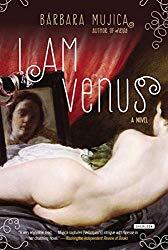
Told from the perspective of the unknown model who posed for what is arguably Velázquez’s most beautiful work, The Rokeby Venus, this novel follows Diego Velázquez’s rise to prominence in the Spanish court. Court life under Philip IV is depicted as a splendid bubble of contradictions: lavish and luxurious yet plagued by bankruptcy, lascivious and self-indulgent, yet clinging to a sober sense morality. Of course, one of the things that tantalizes most in this book is the mysterious production of the Venus painting, painted when feminine nudity on canvas was a punishable offense. However, Mujica also takes special care to chronicle Velázquez’s efforts to elevate art as a gentlemanly endeavor in a country where painters were regarded as mere tradesmen. (Seriously, before him, being an artist in Spain was the WORST.) Furthermore, she gives a voice to the women who surrounded him in his family and social circle, painting a broad picture of Spain itself through their experiences and hardships. This novel is evocative and compelling, and a perfect read for lovers of the Baroque artist.

As Vincent van Gogh once said, "It is with the reading of books the same as with looking at pictures; one must, without doubt, without hesitations, with assurance, admire what is beautiful." May you discover beauty and joy in all of your reading adventures!
By: Jeannette Baisch Sturman
#art books#must read#book list#reading list#art history#art historian#bibliophile#books books books#listicle#history of art#Susan Vreeland#Gert Hoffmann#Jessie Burton#Evelyn Toynton#W. Somerset Maugham#Sheramy Bundrick#J. L. Carr#Robin Oliveira#Vanora Bennett#F. G. Haghenbeck#Barbara Mujica#fun stuff
4 notes
·
View notes
Photo








The stars of “Star Trek” and their German voice actors
William Shatner and Gert Günther Hoffmann Leonard Nimoy and Herbert Weicker DeForest Kelley and Randolf Kronberg James Doohan and Kurt E. Ludwig
youtube
#star trek#tos#william shatner#leonard nimoy#deforest kelley#james doohan#gert günther hoffmann#herbert weicker#randolf kronberg#kurt e ludwig#voice actors#dubbing#german version
47 notes
·
View notes
Photo










The Hound of the Baskervilles (US 1972)
________________________________________________________________
Sherlock Holmes (Stewart Granger)
Dr. Watson (Bernard Fox)
George Stapleton (William Shatner)
Beryl Stapleton (Jane Merrow)
Dr. Mortimer (Anthony Zerbe)
Sir Henry Baskerville (Ian Ireland)
Not outstanding nor impressive and yet, this adaptation of ACDs HOUND is an interesting one, simply because William Shatner plays the role of Holmes’ antagonist Stapleton (sadly he has been given not nearly enough screen time).
One thing in particular makes this adaptation into something very special and quite extraordinary. Although this special experience can only be savoured when watching the German synchronisation.
The very well known German voice of William Shatner, as Captain James T. Kirk from the starship Enterprise, belongs to Gert Günther Hoffmann. Because the speaking part of Shatner’s role in this HOUND adaptation isn’t very big, someone decided that a less known dubbing voice for him would be sufficient. Gert Günter Hoffmann on the other hand was casted in the leading role as Sherlock Holmes.
For this reason a german viewer can enjoy Sherlock Holmes with the voice of Captain Kirk while Captain Kirk appears as Holmes antagonist Stapleton. A really extraordinary experience. :)))
And the voice of Sir Henry Baskerville - dubbed by Norbert Langer - is also quite interesting as it is the very well known voice of Inspector Barnaby and Magnum.


January, 2019
@gosherlocked @raggedyblue @possiblyimbiassed @sarahthecoat @loveismyrevolution @waitedforgarridebs @sherlockshadow @sagestreet @spenglernot @constancecream @mylastvow @tjlcisthenewsexy
#the hound of the baskervilles#stewart granger#william shatner#synchronisation#german synchro#adaptation
48 notes
·
View notes
Photo

"Oğul", bir yandan trajik hikâyesini anlatırken diğer yandan Almanya'nın II. Dünya Savaşı'nın hemen ertesindeki zorlu dönemine odaklanıyor. Prömiyer, harikaydı. Tekrar görmek isterim oyunu. _____ 03/12/2019 Salı, 20.00 ▪ Oyun: "Oğul" (Yazan: Gert Hoffmann, Çeviren ve Rejisör: Barış Eren, 2 perde) ▪ Oyuncular: Hülya Savaş, Mustafa Çolak, Sitare Tuna, Aylin Ünal, Dilek Çetiner Demir, Recep Ayyıldız, Pınar Egeli, Türker Alpuğan ▪ (İzmir Devlet Tiyatrosu Karşıyaka Ragıp Haykır Sahnesi) https://www.instagram.com/p/B5plFPZDF4s-KrhG7ySsGNyqICU0lFgbyqPQBo0/?igshid=zu7sudssjjc4
0 notes
Text
“Zandman / Der Sandmann” (Abattoir Fermé + Theater Freiburg, 2019)
In onze streek staat de Zandman gekend als een welwillende Klaas Vaak die met wit zand over de daken struint op zoek naar kinderen die de slaap niet kunnen vatten. Maar de oorspronkelijke Zandman uit E.T.A. Hoffmann’s vertelling is van een andere orde: een geweldenaar die elke avond om klokslag negen uur de voordeur inslaat en al mankend en grommend de trap opkomt, terwijl een dikke gele walm zich door de gangen van het huis verspreidt en de kamers zich met angst vullen... Niemand weet precies hoe de Zandman eruit ziet, maar wee ieders gebeente die probeert een glimp op te vangen van de plaagzieke duivel. Nathanael, domme domme Nathanael, kan de verleiding echter niet weerstaan en ondervindt wat er gebeurt wanneer de mens zich inlaat met bovennatuurlijke en duivelse krachten...
Nachtelijke hallucinaties, donkere humor en de mens als speelbal van goden, de Alchemie en de liefde: de Zandman is een kolfje naar Abattoir’s hand.
‘Zandman’ is de derde samenwerking tussen Abattoir Fermé en het stadstheater van Freiburg (D), maar wordt de eerste die naar België reist. De productie wordt gespeeld door zowel de spelerskern van Abattoir Fermé als acteurs uit het ensemble van Theater Freiburg.
CREDITS Regie: Stef Lernous / Spel: Kirsten Pieters, Tine Van den Wyngaert, Chiel van Berkel, Moritz Peschke, Holger Kunkel, Elisabet Johannesdóttir / Licht- en decorontwerp: Sven Van Kuijk / Muziek: Jef De Smet / Kostuums: Pia Salecker / Techniek: Sven Van Kuijk, Thomas Vermaercke / Lichtuitvoering: Mario Bubic / Dramaturgie: Rüdiger Bering / Regie-assistentie: Maja Westerveld / Productieleiding: Gert Winckelmans / Zakelijke leiding: Nick Kaldunski / Coproductie Abattoir Fermé & Theater Freiburg.
0 notes
Photo

19. Februar 2017
Heute gesehen: Dynamit in grüner Seide (italienischer Titel: Il più grande colpo della malavita americana), Spielfilm, BRD/Italien, 1968 (Produktion: 1967). Erstaufführung: 23. Februar 1968, Verleih: Constantin, Laufzeit: ca. 89 Min., Farbe (Eastmancolor), FSK: 12. Bildformat: 1,66:1. Drehbuch: Rolf Schulz, Christa Stern. Musik: Peter Thomas. Kamera: Franz Xaver Lederle. Produktion: Constantin Film Produktion, Allianz Filmproduktion, Co-Produzenten: Cinematografica Associati (CI.AS.), Triglav Film. Regie: Harald Reinl. Darsteller: George Nader, Heinz Weiss, Silvia Solar u.a.
Handlung
Der englische Verleihtitel Death and Diamonds verrät mehr als der deutsche, worum es im Kern der Handlung geht. Dynamit in grüner Seide ist ein „heist movie“, wie man in den USA sagt, mit anderen Worten: es geht um einen Einbruch, bei dem Diamanten geraubt werden. Jerry Cotton (George Nader) läßt sich als Elektronikspezialist für Alarmanlagen in der Bande des ominösen Stone einschleusen, den nie jemand von Angesicht gesehen hat. Selbst die Mitglieder seiner Bande verkehren nur über Funk mit ihm. Ihr Hauptquartier ist ein Nachtklub mit dem titelgebenden Namen „Green Silk Bar“. Dort trifft Cotton auf Bloom (Carl Möhner), Stones Verbindungsmann und Leiter der Operation, sowie auf die Bardame Lana (Silvia Solar). Nachdem Cotton schließlich das verbrecherische Unternehmen unter Einsatz seines Lebens zum Scheitern gebracht hat, gibt es am Ende eine wilde Verfolgungsjagd, bei der er dem fliehenden „Stone“ nachsetzt.
Darsteller:
George Nader: Jerry Cotton (Synchronsprecher: Gert Günther Hoffmann)
Silvia Solar: Lana
Carl Möhner: Bloom (Sprecher: Rainer Brandt)
Günther Schramm: Tackley, Winkeladvokat (Sprecher: Jürgen Thormann)
Heinz Weiss: Phil Decker
Claus Holm: Butt Lancaster, Polizeichef von Los Angeles
Dieter Eppler: Tomasio, Handlanger von Bloom
Käthe Haack: Mutter Cotton
Rainer Basedow: Fat, Handlanger von Bloom
Karlheinz Fiege: Gerald Santon
Marlies Dräger: Mabel
Rolf Eden: Handlanger von Bloom
Horst Niendorf: FBI-Chef
Claus Tinney: Rick Trevor u.a.
Die Handlung spielt in Los Angeles, wo auch ein „second unit“ Außenaufnahmen ohne Darsteller hergestellt hat. In aller Regel sieht man Bilder aus der kalifornischen Metropole allerdings nur in der Totalen, wenn das Straßenbild gezeigt wird, oder in Rückprojektion mit Darstellern in Großaufnahme. Aufnahmen mit Schauspielern gab es in Jugoslawien und Berlin. Dort fanden auch die Studioaufnahmen statt.
Nachdem in den ersten Cotton-Filmen Heinz Engelmann George Nader seine Stimme geliehen hat, übernimmt hier Gert Günther Hoffmann die Synchronrolle (man kennt ihn übrigens auch als Sprecher von Sean Connery in den James-Bond-Filmen).
Kurioserweise werden nicht nur die ausländischen, sondern auch einige der deutschsprachigen Schauspieler synchronisiert und sprechen so mit einer „fremden“ Stimme, so zum Beispiel Carl Möhner, Günther Schramm, Heinz Weiss, Rolf Eden. Andere hatten offenbar die Zeit, um im Sychronstudio sich selbst zu sprechen (wie Claus Holm, Dieter Eppler, Käthe Haack).
Überhaupt die Synchronisation: Jerry Cotton wird hier eine Schnodderschnauze verpaßt, die bei allen möglichen und unmöglichen Gelegenheiten flapsige Sprüche von sich gibt.
Bewertung
„FBI-Mann Jerry Cotton schmuggelt sich in eine gefährliche, gut organisierte Gangsterbande ein und bringt sie während eines Diamantenraubes zur Strecke. Spannender, in einigen technischen Einzelheiten unwahrscheinlicher Krimi.“ [Filmdienst = Lexikon des internationalen Films]
DVD-Veröffentlichungen
2004 brachte Kinowelt eine mittlerweile vergriffene DVD-Box mit sechs Silberscheiben unter dem Titel G-man Jerry Cotton - Collectors Edition heraus, bei der Dynamit in grüner Seide enthalten war. Der Film hatte dort eine Laufzeit von 84:13 Min. Aktuell verfügbar ist der Jerry-Cotton-Streifen im deutschen Heimkinomarkt nicht mehr, es sei den man findet Gebrauchtware. 2008 veröffentlichte der amerikanische DVD-Verlag Sinister Cinema die englischsprachige Synchronisation unter dem Titel George Nader as Jerry Cotton in Death & Diamonds (diese Fassung soll eine Spieldauer von 91 Min. haben, siehe Sinister Cinema).
Quellen: [IMDB]; [OFDB]; [Wikipedia (de)]; [Filmportal]
0 notes